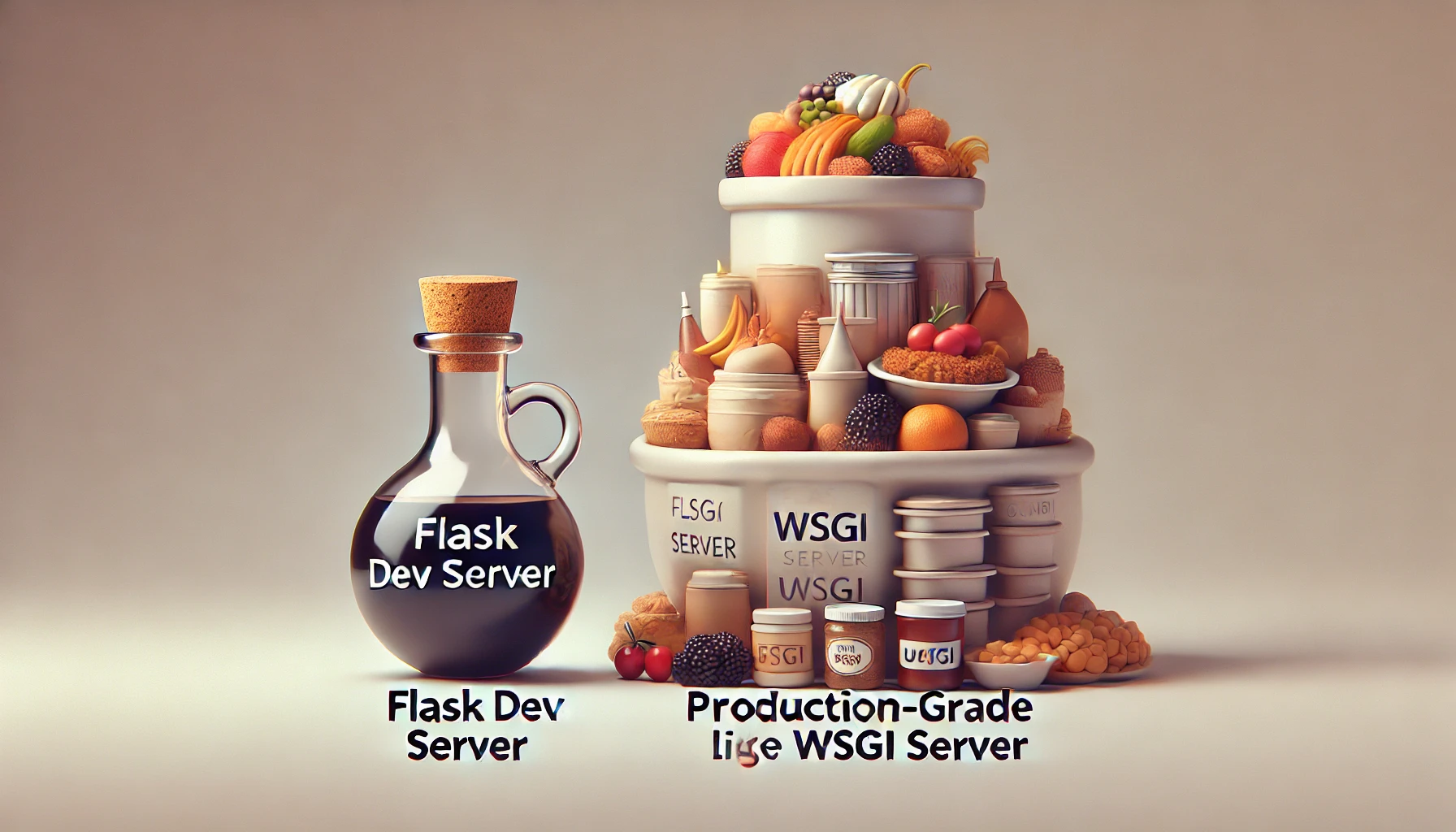Why You Shouldn't Use Flask's Development Server in Production: A Cautionary Tale
 Berthran Daniel
Berthran Daniel
As a young software engineering student, Joe loved using Flask to build and share his apps. Flask’s built-in server, invoked with the flask run command, was convenient and straightforward for development. Joe enjoyed showing his apps to friends, but he soon discovered that this server wasn’t suitable for production environments. Here’s a journey through Joe's experiences and why he decided to transition to a production-grade WSGI server.
1. Performance: Handling the Load
Joe’s apps quickly became popular among his friends. As more people accessed his apps simultaneously, he noticed a significant slowdown. Flask’s development server, which is single-threaded by default, struggled to handle multiple concurrent requests efficiently.
Joe realized that production-grade WSGI servers like Gunicorn and uWSGI could handle such traffic effortlessly by managing multiple requests simultaneously with worker processes. This scalability made them ideal for production environments.
2. Security: Protecting Personal Data
Joe was keenly aware of the importance of security, especially when handling personal information. Some of his applications required users to share sensitive details, and Joe was concerned about unauthorized access and data breaches.
The Flask development server lacked robust security features, which were essential for protecting sensitive data. Production-grade WSGI servers offer better security measures and compliance with best practices, ensuring that user data remains secure.
3. Stability and Reliability: Meeting Diverse Demands
Joe lived in a vibrant community where people constantly tried out his latest apps. Flask’s development server had difficulty maintaining stability and reliability under the diverse and frequent requests from many users.
Production-grade WSGI servers are built for stability and reliability, capable of handling a wide range of requests without crashing or becoming unstable. This made them a better choice for Joe’s growing user base.
4. Integration with Reverse Proxies: Understanding the Setup
Joe was initially confused about reverse proxies, but he noticed that Flask’s development server didn’t handle tasks like serving static files and managing incoming traffic efficiently. Although he didn’t fully understand reverse proxies, he recognized that Production-Grade WSGI Servers worked better with them.
Joe learned that reverse proxies, such as Nginx or Apache, work in conjunction with production-grade WSGI servers to manage incoming traffic, serve static files, and provide an extra layer of security and performance optimization.
Conclusion
In conclusion, Joe’s journey from using Flask’s development server to adopting production-grade WSGI servers like Gunicorn and uWSGI was crucial for building scalable, secure, and reliable applications. By understanding the limitations of the development server and embracing best practices for production environments, Joe ensured that his applications could handle millions of users effectively.
Joe’s story highlights the importance of choosing the right tools and configurations for different stages of development and deployment. For anyone building applications that need to perform well under real-world conditions, adopting production-grade solutions is a vital step toward success.
Have you experienced similar challenges with your development and production environments? Share your stories and insights in the comments below! If you found this article helpful, consider sharing it with your network to help others understand the importance of using the right server for the right purpose. And if you have any questions about setting up production environments or need advice on WSGI servers, feel free to ask!
Subscribe to my newsletter
Read articles from Berthran Daniel directly inside your inbox. Subscribe to the newsletter, and don't miss out.
Written by

Berthran Daniel
Berthran Daniel
I am full-stack developer niched in the backend of things. My greatest passion is learning and understanding why and how things work. I love and got into tech because it gives me a possibility mentality in approaching challenges I face.